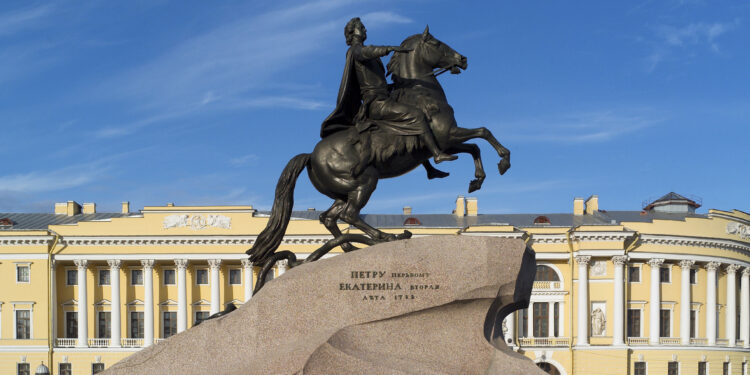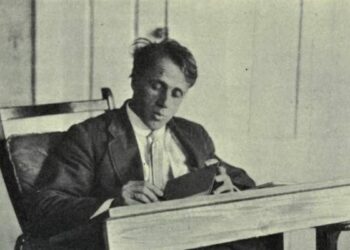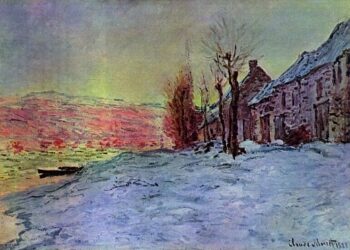Table of Contents
ToggleIntroduction
The Bronze Horseman Summary By Alexander Pushkin Many people consider Alexander Pushkin (1799–1837) to be the best poet in Russia and a key figure in Russian literature. His writings are regarded as masterpieces of Russian Romanticism, and he had a significant impact on Russian language and culture. His most well-known piece, The Bronze Horseman, blends historical occurrences with poetic, vivid imagination to explore themes of fate, the state’s authority, personal destiny, and the forces of nature’s inevitability.
The Bronze Horseman, a narrative poem written in 1833, depicts the struggle between the individual and the state’s overpowering might, which is represented by the statue of Peter the Great in St. Petersburg. The poem examines issues including human pain, state bravery, and the conflict between individual aspirations and the more powerful forces of nature and history.
Summary of The Bronze Horseman
The Bronze Horseman is a narrative poem written in 1833 by Alexander Pushkin. The poem is divided into two parts, each presenting different aspects of Russian life and contrasting viewpoints on the relationship between the individual and the state.
Part 1: The Construction of St. Petersburg and Peter the Great
The first part of the poem introduces the historical background of the poem’s setting: the city of St. Petersburg, which was founded by Peter the Great in 1703. Pushkin begins with a vivid description of the city, its grandeur, and its location on the Neva River, emphasizing its importance as the heart of Russia’s imperial ambitions. St. Petersburg symbolizes the Russian Empire’s power and progress, but it is also a city that was built on the sacrifices and hardships of the Russian people.
Pushkin moves from this historical perspective to the introduction of the statue of Peter the Great, which stands proudly in the center of the city. The bronze statue of Peter the Great, constructed during Catherine the Great’s reign, symbolizes the ruler’s monumental achievements in transforming Russia into a major European power. The statue stands as a symbol of the absolute power of the Russian state, with Peter the Great depicted as a heroic figure whose actions shaped the country’s destiny.
Read more
Part 2: The Tragic Fate of Eugene Onegin
The second part of the poem shifts to a more personal and emotional story, following the character of Eugene, a young man who lives in St. Petersburg. Eugene is a simple, unremarkable individual, an ordinary man caught up in the grand machinery of state power. He is a clerk who lives an unassuming life, struggling to make ends meet. Eugene’s life is shattered by an unexpected disaster: a devastating flood in St. Petersburg, which overwhelms the city’s infrastructure and causes immense destruction.
Eugene’s personal tragedy unfolds when his beloved, a young woman named Parasha, is swept away by the flood. Eugene’s heartbreak is exacerbated by the helplessness he feels in the face of a disaster that no individual can prevent or control. However, his fate takes a dark turn when he is confronted by the statue of Peter the Great, which symbolizes the power of the state. Eugene, filled with rage and despair, begins to question the state’s indifference to human suffering and the lack of personal agency in the face of powerful, uncontrollable forces.
In a fit of madness, Eugene decides to confront the statue, and in a moment of symbolic defiance, he curses Peter the Great and the state he represents. The poem ends with Eugene losing his sanity, tormented by the figure of Peter the Great’s statue, which stands as an indomitable and indifferent force in the city. Eugene’s tragic end is a commentary on the helplessness of the individual in the face of overwhelming state power and natural forces.

Themes in The Bronze Horseman
1. The Conflict Between the Individual and the State
The struggle between the state and the individual is one of The Bronze Horseman’s main themes. The statue of Peter the Great, which dominates the city, represents the state’s might, majesty, and authoritarianism. Eugene’s personal fight against this immense power serves as a metaphor for the conflict between societal forces and individual freedom throughout the poem.
The statue symbolizes the state’s victory over human life, implying that no one can break free from the strict system the state has established, regardless of how terrible their circumstances may be. As a regular person, Eugene has no control over history or the state’s disregard for the suffering of its people. This emphasizes the conflict between individual emotional struggles, personal goals, and the impersonal, massive forces of politics and history.
Read more
2. Fate and Free Will
Fate and the illusion of free will are prominent themes in the poem. Pushkin explores the idea that individuals may feel as though they have control over their destinies, but in the face of large, uncontrollable forces like nature, the state, and history, they are ultimately powerless. Eugene’s personal tragedy—the loss of Parasha—occurs as a result of an unpredictable flood, which stands as a metaphor for the uncontrollable nature of life itself.
Despite Eugene’s attempts to rebel against fate and challenge the power of the state, he is ultimately a victim of circumstances beyond his control. His fate, like the fate of many others, is determined by larger forces—whether nature, the state, or historical inevitability—and Eugene’s inability to escape these forces is a key element of his tragedy. The theme of fate and free will underscores the poem’s meditation on the smallness of individual human lives in the face of grand historical forces.
3. The Power of Nature
The destructive flood in the poem is a key element that emphasizes the power of nature. Nature is depicted as a force that can overwhelm human efforts, regardless of the individual’s will or ambition. The flood acts as a reminder of the futility of human life in the face of nature’s dominance. Even the great city of St. Petersburg, which symbolizes Russian imperial power, is at the mercy of the forces of nature.
Pushkin uses the flood to contrast the grandeur of the state with the vulnerability of the human condition. The flood symbolizes the uncontrollable, chaotic aspects of life—suffering, death, and destruction—that no state, no matter how powerful, can prevent. The interaction between the individual’s personal tragedy and the powerful forces of nature highlights the fragility of human existence.
4. Heroism and the State
The image of Peter the Great and his statue is also associated with the theme of heroism, albeit a problematic one. While Peter the Great is revered for transforming Russia into a powerful empire, his legacy is also one of authoritarianism and state control. Pushkin’s depiction of the statue portrays Peter as a heroic figure, but one whose accomplishments come at the expense of the suffering and sacrifice of ordinary people like Eugene.
In a broader sense, the poem questions the nature of heroism and whether true heroism can exist when it is built upon the exploitation or suffering of others. Peter’s heroism, symbolized by the imposing statue, is contrasted with Eugene’s personal suffering, revealing a deeper tension between the heroism of the state and the tragic lives of the individuals it governs.
5. Madness and the Breakdown of the Self
Eugene’s descent into madness in the poem is a powerful symbol of the breakdown of the individual in the face of overwhelming forces. After the tragedy of the flood and the loss of his loved one, Eugene’s confrontation with the statue of Peter the Great becomes a moment of personal crisis, leading to his insanity. His mind cannot reconcile the powerlessness he feels in the face of both the state and the unpredictable forces of nature.
The theme of madness reflects the emotional and psychological toll that the individual’s struggle against fate can take. Eugene’s madness is not only a personal crisis but also a commentary on the human condition when faced with overwhelming and uncontrollable circumstances. His inability to make sense of the world around him and his eventual mental collapse serve as a tragic conclusion to his struggle against forces beyond his control.

Conclusion
Alexander Pushkin’s The Bronze Horseman delves deeply into the struggle between the state and the individual, the force of nature, and fate’s inevitability. Pushkin vividly depicts human misery and the harsh reality of existence in an authoritarian state via the tragic tale of Eugene. The poem poses significant queries on the definition of bravery, authority, and the susceptibility of those enmeshed in the greater historical machinery.
Read more
(FAQ)
1. What is the significance of the Bronze Horseman statue?
The Bronze Horseman statue symbolizes the power of the Russian state, particularly the legacy of Peter the Great. The statue is an emblem of state heroism, but it is also a symbol of the indifference of the state to the suffering of individuals. In the poem, the statue looms over the city, representing the overarching authority and control of the state, which stands in contrast to the personal struggles of individuals like Eugene.
2. How does the flood in the poem function symbolically?
The flood in The Bronze Horseman symbolizes the uncontrollable forces of nature, fate, and the chaos of life. It is a destructive force that overwhelms both the city and Eugene, demonstrating the vulnerability of individuals in the face of nature’s power. The flood also acts as a metaphor for the unpredictability of life, where even the most powerful human institutions cannot shield people from disaster.
3. What does Eugene’s madness signify?
Eugene’s madness represents the psychological and emotional toll of the conflict between the individual and overwhelming forces such as the state and nature. His breakdown reflects the inability of the individual to come to terms with the powerlessness that arises from larger, uncontrollable forces. Eugene’s descent into madness can be seen as a symbol of the fragility of the human psyche when confronted with fate’s cruelty.
4. What is the relationship between fate and free will in the poem?
The Bronze Horseman explores the tension between fate and free will. While Eugene may believe in his own agency, the forces of nature, history, and the state determine his ultimate fate. The poem suggests that, despite personal desires and intentions, human lives are subject to larger, more powerful forces, illustrating the limitations of individual free will.
5. How does Pushkin critique the power of the state in the poem?
Pushkin critiques the power of the state through the symbolic figure of Peter the Great and his statue. While Peter is celebrated for his contributions to Russia’s growth and power, Pushkin presents a more ambivalent view of his legacy. The poem suggests that the state, while heroic in its achievements, is indifferent to the suffering of the individuals it governs. This critique highlights the tension between state power and personal hardship.
Read more

















